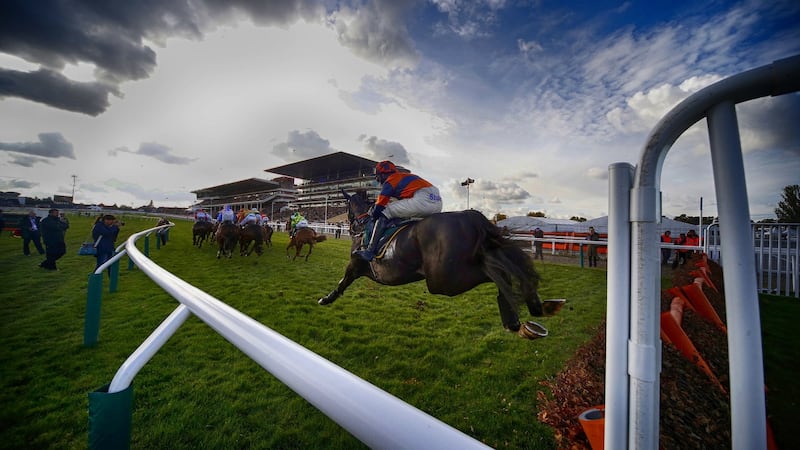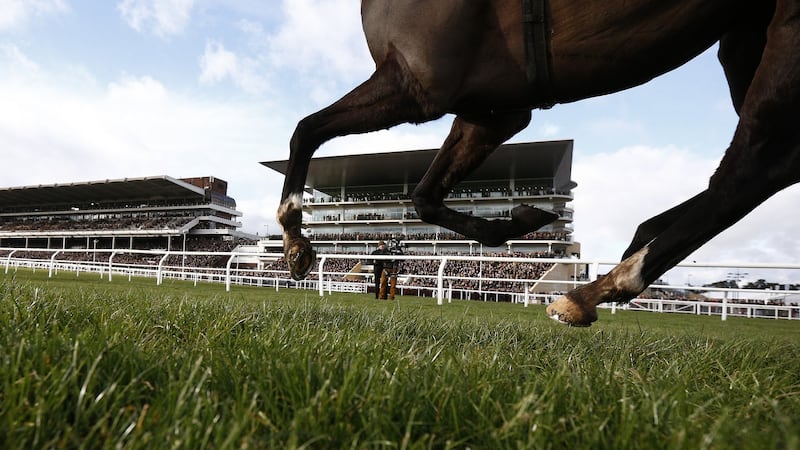If it is not every punter’s abiding memory of last year’s Cheltenham Festival, it is certainly the most immediate. Twenty-two horses went to post for the Grand Annual Chase, the final race of the meeting, and in the space of 4½ minutes, three suffered fatal injuries when falling.
In the preceding 27 races over the four days, there had been three fatal injuries – from a total of 425 runners. While the death of six horses during races at one festival is not unprecedented – there were nine fatalities due to injuries at the 2006 meeting – the loss of three in one race was the most miserable and dispiriting postscript to a Cheltenham that anyone could remember. As a result, there will be apprehension mingling with the excitement as National Hunt racing reconvenes in the West Country next week for the most important four days of the season.
Two decades’ worth of data on faller and fatality rates at the festival suggest last year’s grand annual was a horrible freak of a race, but questions linger. Is racing at the festival as safe as it can be for horses and riders? Or may there be something inherent in the meeting’s significance and intensity that means different rules apply on safety and risk?
The chance any individual starter would suffer a fatal injury when racing, in other words, was about 200/1
There is certainly enough variance in the rate of fatal injuries at the festival when compared with the same figure for other meetings at Cheltenham to suggest the answer to the second question is yes.
This suggests that in March, the chance a horse would be killed at Cheltenham was more like 130/1
Data on the rate at which runners suffered fatal injuries – the number of fatalities divided by the number of starters – is available for the last 20 full seasons, not including 2000-2001 when the festival was abandoned following an outbreak of foot-and-mouth disease. In the remaining 19 seasons, 82 horses were killed when racing at Cheltenham’s non-festival meetings from 16,303 starters, a fatality rate of almost exactly 0.5 per cent. The chance any individual starter would suffer a fatal injury when racing, in other words, was about 200/1. In the 19 festivals over the same period, there were 8,513 runners, and 63 deaths, a fatality rate of 0.74 per cent. This suggests that in March, the chance a horse would be killed at Cheltenham was more like 130/1.
Last year, for instance, there were nine fatalities from 1,333 runners across all Cheltenham races – including the six fatalities at the festival. Or, to put it another way, just three fatalities from 886 non-festival runners.
It is fair to say the chance any individual runner will be killed when racing at Cheltenham is extremely low, whether it is competing at the festival or not. But it is also fair to say, using the same set of figures, that the chance a horse will be killed is almost 50 per cent higher at the festival than it is at one of Cheltenham’s other meetings.
There are a wide range of possible factors that could, either individually or in combination, underlie this disparity, many of which were considered in an extensive review of last year’s festival by the British Horseracing Authority (BHA), which published its findings in December.


The review made 17 recommendations, many of which will be implemented next week. For the first time, every runner at the festival – expected to be about 450 in all – will be inspected by a vet before it competes. If the vet is not satisfied the horse is sound and fit to race, it will be scratched. The safety limit for two-mile chases, including the grand annual, has been cut to 20 from 24, and there will be extra fans in the pull-up area to cool down the runners after the race.
This includes introducing a detailed system of checks for our horses
Human factors have also been considered. A compulsory daily briefing has been introduced for all jockeys “to include increased focus on their responsibilities towards equine welfare”. A similar formal briefing was introduced before the Grand National in 2013, since when there has been a sharp rise in the number of horses being pulled up when their chance has gone.
"For this year's Cheltenham Festival we have worked with the racecourse and our industry to ensure our horses and participants are better prepared than ever before," said Robin Mounsey, the BHA's head of media, on Friday. "This includes introducing a detailed system of checks for our horses, extensive engagement with trainers and jockeys, and some changes to the rules of entry for certain races.
“The review also recommended some initiatives which will have a longer-term benefit, in particular the creation of a detailed predictive risk model. One of the findings of the review was that non-track factors – such as veterinary, participant, and race condition factors – could potentially be of equal, or potentially greater, significance than track-related factors. The predictive risk model will help us understand some of the behind-the-scenes issues which might be contributing to increased risk at the festival.”
There will, of course, always be the risk, however small, a horse will be injured or killed when racing, at Cheltenham or anywhere else. Efforts will continue, both during this week’s festival and afterwards, to reduce the risk wherever possible, while fans and professionals alike will head for Gloucestershire next week hoping the 28 races at this festival are less traumatic than the last. – Guardian












